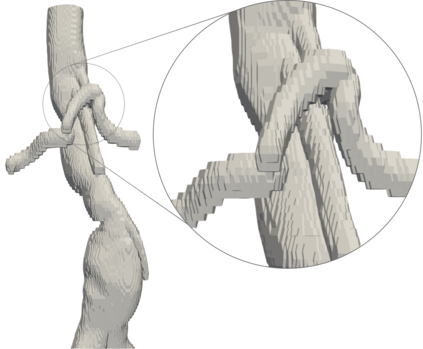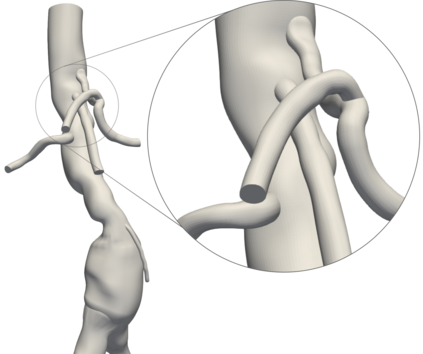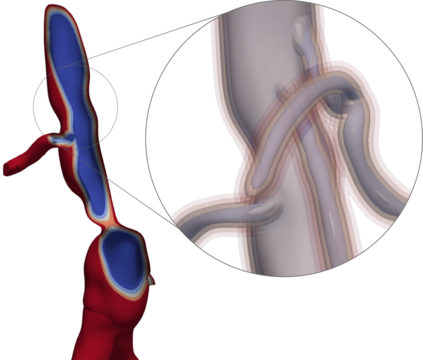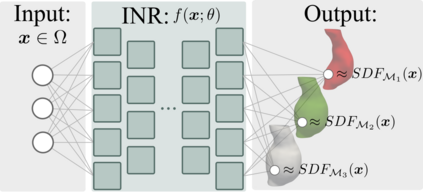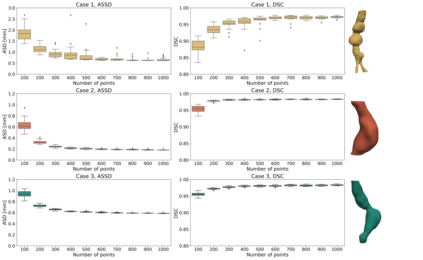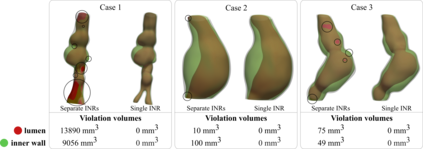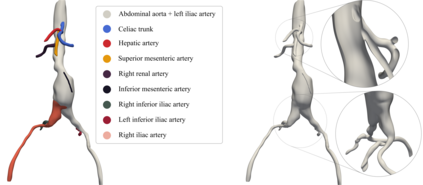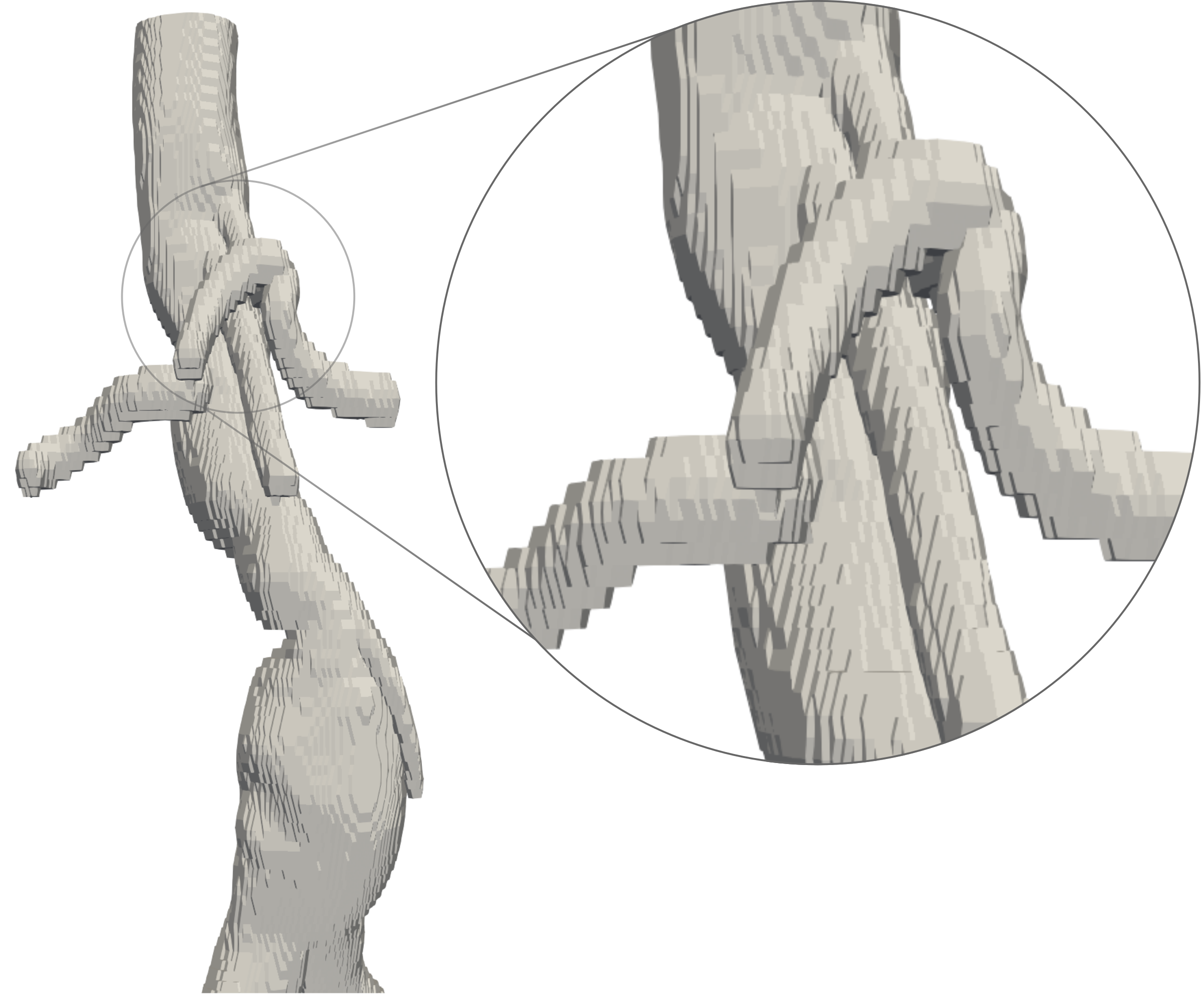Personalised 3D vascular models are valuable for diagnosis, prognosis and treatment planning in patients with cardiovascular disease. Traditionally, such models have been constructed with explicit representations such as meshes and voxel masks, or implicit representations such as radial basis functions or atomic (tubular) shapes. Here, we propose to represent surfaces by the zero level set of their signed distance function (SDF) in a differentiable implicit neural representation (INR). This allows us to model complex vascular structures with a representation that is implicit, continuous, light-weight, and easy to integrate with deep learning algorithms. We here demonstrate the potential of this approach with three practical examples. First, we obtain an accurate and watertight surface for an abdominal aortic aneurysm (AAA) from CT images and show robust fitting from as little as 200 points on the surface. Second, we simultaneously fit nested vessel walls in a single INR without intersections. Third, we show how 3D models of individual arteries can be smoothly blended into a single watertight surface. Our results show that INRs are a flexible representation with potential for minimally interactive annotation and manipulation of complex vascular structures.
翻译:个人3D血管模型对于心血管疾病患者的诊断、预测和治疗规划是有价值的。传统上,这些模型是用显性表象,如 meshes 和 voxel 面罩,或辐射基函数或原子(肿瘤)形状等隐含表象,来建造的,这些模型是明确的表象。在这里,我们提议用它们签字的距离功能(SDF)的零水平来表示表面,以不同的隐含的心血管表象(INR)来表示。这使我们能够模拟复杂的血管结构,其表象是隐含的、持续的、轻轻轻轻的和易于与深层学习算法结合的。我们在这里用三个实际例子展示了这一方法的潜力。首先,我们从CT图像中获得了准确和水密的表面表面表象,显示它们从表面的200个点开始就具有很强的相容性。第二,我们同时把嵌套的容器壁壁放在一个没有交叉点的单一INR。第三,我们展示了3D 个人动脉模型如何顺利地混入一个水深的表面。我们的结果显示,一个具有互动结构的灵活结构。

